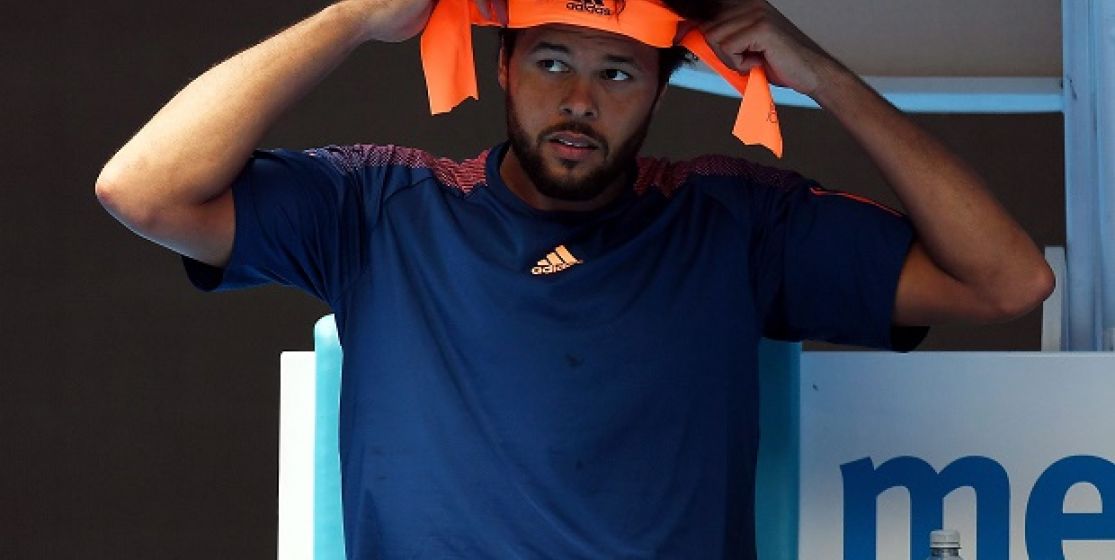It was the symbol of women’s emancipation, an elegant accessory and a handy ally. But today, it has almost disappeared from all surfaces and only show up occasionally thanks to the few remaining free spirits. Tennis misses the headband. And especially at Roland-Garros.
Jérémy Delinbeuf was a good French player at the end of the 90’s. Pretty solid in every aspect of the game, with no huge deficit in his game. But most of all, he had his own style : long hair almost like a hippie, and a Bjorn Borg-like headband. His tennis partner at the time, Julien Varlet, recalls a few memories, with a smile : « He said that his strength came from his hair. He thought that it was the reason behind him playing well. So he adopted his Swedish idol’s style, short front and long at the back. If he didn’t have his hair, it’s quite simple, he couldn’t play. And I can assure you that when it happened in the army, he cried. In the end, he never grew his hair long again. » And he never really made a name for himself. He’s now a tennis coach.
Brigitte Bardot, heels and jazz
Fashion and tennis have always been linked. At the start of the 20th century, the sport was still considered to be an elitist hobby. Men played in three-piece suits, women played in heels, and wearing a hat. Then came a man who wore a goatee like nobody else, but who mainly understood that these clothes were not suitable to play tennis. Paul Poiret was a French fashion designer and he notably helped Suzanne Lenglen to become freer with her gestures on the court, and stop her from always staying close to the net. The skirt became much shorter than it used to be, she adopted a crop haircut and wore a pretty large headband to prevent her hair from falling in front of her eyes. That’s the first appearance of this accessory, which is linked, in the end, to women’s emancipation.
Brigitte Bardot, Audrey Hepburn, Grace Kelly all adopted it, democratized the trend, but for it to really mark tennis in a more global way, it needed a pioneer. It needed a model. His name was Torben Ulrich and he was the first clay hippie. He never really made history at Roland-Garros but one thing remains certain : the jazz bars of Saint-Germain-des-Prés all remember him. With his huge beard and very long hair, he spent most of his Parisian nights playing music. If he only turned professional at 40, he was one of the first, in the 60’s, to wear a headband for an esthetic reason and for its hippie connotation rather than for it’s practical aspect. As the night owl that he was, he refused to play early in the morning during his whole career, another hint (if we really needed one), that he wasn’t really there to compete, but to impose his style.
Agassi, the last heir
If before him, Thomaz Koch had already tried to wear a bandana, it’s difficult to say who wore it first. In any case, in the 70’s, that was the style to have. Rambo, Björn Borg, The Karate Kid, McEnroe and Springsteen, like a huge part of the ATP circuit, also wore it. In the NBA, basket-ball players did the same. And if you had to explain how this headband became fashionable, one single answer wouldn’t be enough. Pascal Montfort has been teaching fashion history and sociology for a long time, and has also worked for Nike as a fashion consultant. According to him, the useful aspect only came second : « Of course, it prevents you from having sweat dripping into your eyes. But that’s not the main reason. The proof is that the headband has almost disappeared from all the courts today, and players prefer to wear other accessories, but they haven’t stopped sweating. No, I think it was mainly a fad. To me, Björg and McEnroe wore it best. Their common trait ? They both had long hair. So there was a double utility, even a triple one : you hair wouldn’t fall over your eyes, you could put a logo on it, and it was mainly a time when tennis players were still icons, fashion references, pioneers. It gave them a rockstar, hippie, rebel aspect. Tennis players were cool. »
And only one of them seems to have adopted this facial sponge for all its possible utilities. The icing on the cake of an improbable style, wig-holder, sweat-absorber, the headband became an integral part of Andre Agassi’s game. In his autobiography, he mentions his final lost in Paris in 1990, and points out his capillary set-up : « During my final, each time I hit the ball, I was afraid that everything would fall apart. Can you imagine millions of viewers watching this live ? » And if today, a few remaining players - Nishikori, Paire, Nadal or Federer - still occasionally wear a headband, it’s hard not to see that the cap or the bandana have clearly taken over the courts. Julien Varlet has witnessed the slow death of the facial sponge and has his own opinion on its reasons : « During my time, you wouldn’t see many players wearing a headband. Bandanas, yes, with Escudé or Clément, but at the end of the 90’s, the trend was almost gone. It was almost old-fashioned. » An opinion shared by Diane-Elisabeth Poirier, the author of the book « Fashion and Tennis » at the start of the 2000’s : « I also think that it’s linked to the evolution of haircuts. The headband would suit players who had long, curly hair. And little by little, players preferred to have short hair, they even started to shave their heads. And obviously, it doesn’t work with a headband. » Another low blow for people who have to deal with baldness.






